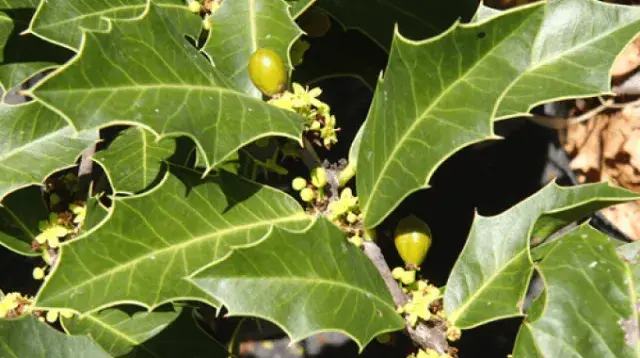Saving plants that heals
Wild Plants: Healing and Conservation
A botanical treasure in need of protection
Threats to diversity
Argentina is home to some of the most abundant biodiversity in the world, including a variety of medicinal plants - no less than 1,500 indigenous species. However, this botanical treasure is not very well known beyond the country's borders.
But more worrisome is the gradual decline of this plant heritage. Despite the importance of these medicinal plants, which provide a source of income and a means of rural subsistence, only a few are grown due to cost and because most agricultural land is used to grow crops for food.
These plants' habitat has also been degraded by the expansion of agriculture, urbanization, mining, the overexploitation of natural resources and pollution.
Teaming up to save them
Despite the long-standing involvement of the botanical gardens and other agricultural research bodies in Argentina, efforts must be intensified to prevent the decline of these medicinal plants and increase knowledge of them beyond the borders.
Our solution: a partnership with the largest plant protection network in the world (BGCI) and a renowned botanical garden in Buenos Aires (Carlos Thays). While the medicinal plants of Argentina face the threats of extinction and a loss of recognition, we have jointly developed a protective mission involving several initiatives:
- intensifying the cultivation of the most widely-used species to reduce the pressure on their remaining natural habitats,
- expanding the ex situ protective plant collections in the botanical gardens,
- the creation of banks of living plants and seeds that represent the genetic diversity of indigenous species,
- helping to consolidate the national network of botanical gardens,
- and raising the population's awareness.
Preserving knowledge of herbal medicine as well
In Argentina, traditional herbal medicine involving the use of indigenous plants is a key element in healthcare.
For example, in the Sierra de Comechingones mountains alone, we have catalogued approximately 150 species of plants collected for medicinal preparations.
These plants are not only used in human medicine. In traditional veterinary practice, their properties are harnessed in concoctions that can reduce pain, treat parasites, etc.

Maytenus ilicifolia
(Family: Celastraceae)
This medicinal plant is used to prepare medicines to treat various illnesses, and as a contraceptive. It is indigenous to north-eastern Argentina, Paraguay, Uruguay and southern Brazil.

Pilocarpus pennatifolius
(Family: Rutaceae)
This medicinal plant is used in indigenous cultures to treat stomach problems and has more recently been used in eye care as well. It comes from north-eastern Argentina.
wo major international partners
Botanic Gardens Conservation International (BGCI)
The world's largest plant protection network.
With over 700 members and partners in nearly 120 countries, BGCI supports programs for the protection of endangered plant species, provides general and technical recommendations, and regularly shares information through newsletters, magazines, conferences and training sessions.
Thanks to its international scope and professional expertise, it also successfully influences government policy.
Carlos Thays Botanical Garden
At the heart of the Argentinian capital, Buenos Aires, it is one of the city's most popular tourist attractions. It currently houses 3,700 living specimens from 200 different botanical families, as well as a herbarium containing 4,630 plants. A large part of the garden is dedicated to growing indigenous Argentinian tree species.
Carlos Thays Botanical Garden is a major institution in Argentina, not only thanks to its geographical location and history, but also because it plays an important role in developing educational projects.
This botanical garden was founded 120 years ago by the French landscape architect and urban planner Charles Thays.
